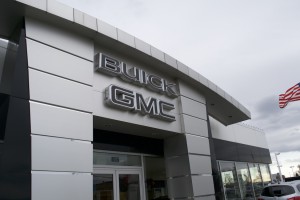Sales of new vehicles seem to be on the Goldilocks track in October – not too hot and not too cold – with a modest decline from last month, according to new reports from analysts, but a healthy seasonally adjusted sales rate of more than 17 million units.
Edmunds, the car-buying site, estimates the SAAR will 17.6 million, reflecting a 13.3% drop in sales from September 2017 and a 3.5% decrease from October 2016. Following strong September results, October 2017 is poised to keep up some of the momentum.
Analysts for Kelley Blue Book estimate that new-car sales will drop 2% year-over-year, sales but are expected to be relatively strong for the industry. Some of the strength can be attributed to replacement demand that continues in Texas and Florida, but perhaps more importantly, higher incentive spend is playing a role, according to KBB — a sentiment shared by others.
“A 17.6 million SAAR in October is expected to be the second highest monthly sales rate of 2017, so despite the year-over-year decline, the industry can still consider it a solid month,” said Jessica Caldwell, Edmunds executive director of industry analysis.
(U.S. new vehicle sales rebound in September. For the story, Click Here.)
“We expect to see increasingly aggressive incentives offered on outgoing models through the end of the year as automakers look to build on this momentum, so car buyers can likely anticipate some door-buster deals this holiday season,” she added.
Tim Fleming, analyst for Kelley Blue Book, said while the headline number shows a small decline in sales, October looks relatively strong for the industry.
“Sales blew past expectations in September toward an 18.5 million SAAR pace, and we expect October to keep up some of that momentum. Some of the strength can be attributed to replacement demand that continues in Texas and Florida, but perhaps more importantly, higher incentive spend is playing a role,” he said.
“Even with production cuts this year, incentives are on the rise and have reached 11% of average transaction prices. This is an indicator that new-vehicle demand is still contracting, and production cuts could be on the horizon to prevent oversupplies,” Fleming added.
(For more on September sales, Click Here.)
After a record year of sales in 2016 and seven consecutive annual increases, Kelley Blue Book’s forecast for 2017 calls for sales in the range of 16.9 and 17.2 million units, which represents a 1 to 3% decrease from last year.
Once again, manufacturers are likely to report mixed results on sales day.
Volkswagen Group could report significant growth in October with a projected 12% increase. Volkswagen has two new SUVs on the market, the all-new Atlas and the redesigned Tiguan, which should account for most of the brand’s growth. These new models will help Volkswagen transition their volume toward SUVs from a line-up that has been traditionally dominated by cars.
On the other hand, Fiat Chrysler could have the largest year-over-year declines with an anticipated 11% decrease.
(To see more about GM going $3B into the red for the third quarter, Click Here.)
While part of the drop is due to fleet and rental reductions, retail sales also look to be down. Although SUVs are still in high demand, Fiat Chrysler’s SUVs could be down nearly 10 percent for October 2017. However, we should note that the recently redesigned Jeep Compass should have a very strong month.


